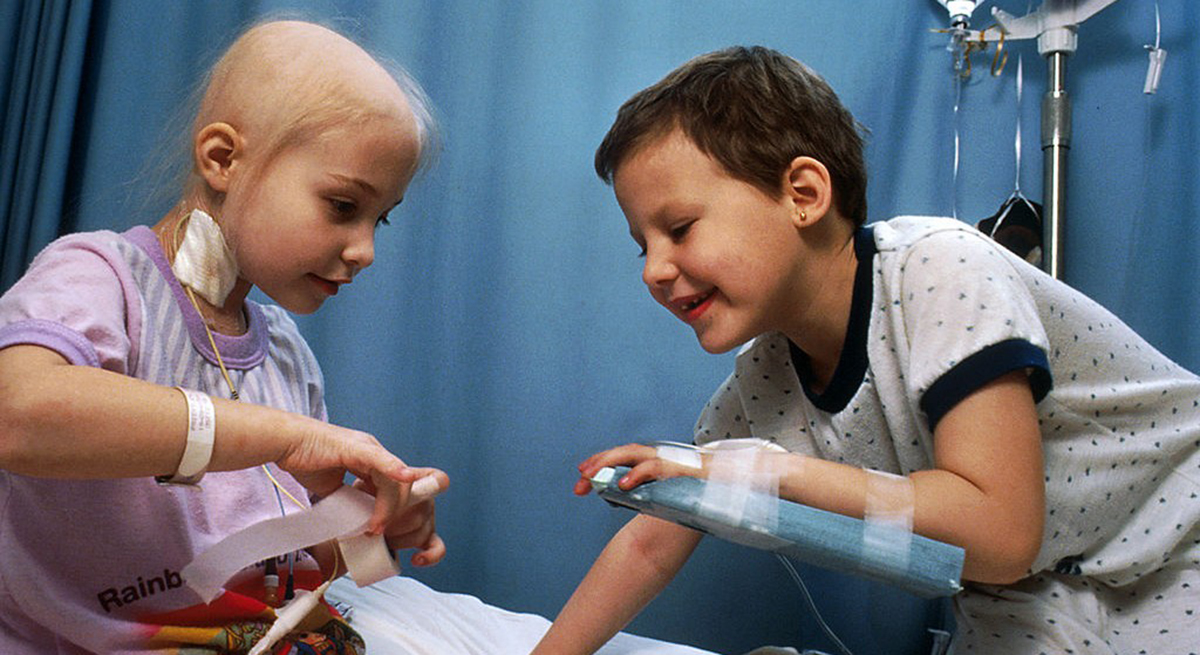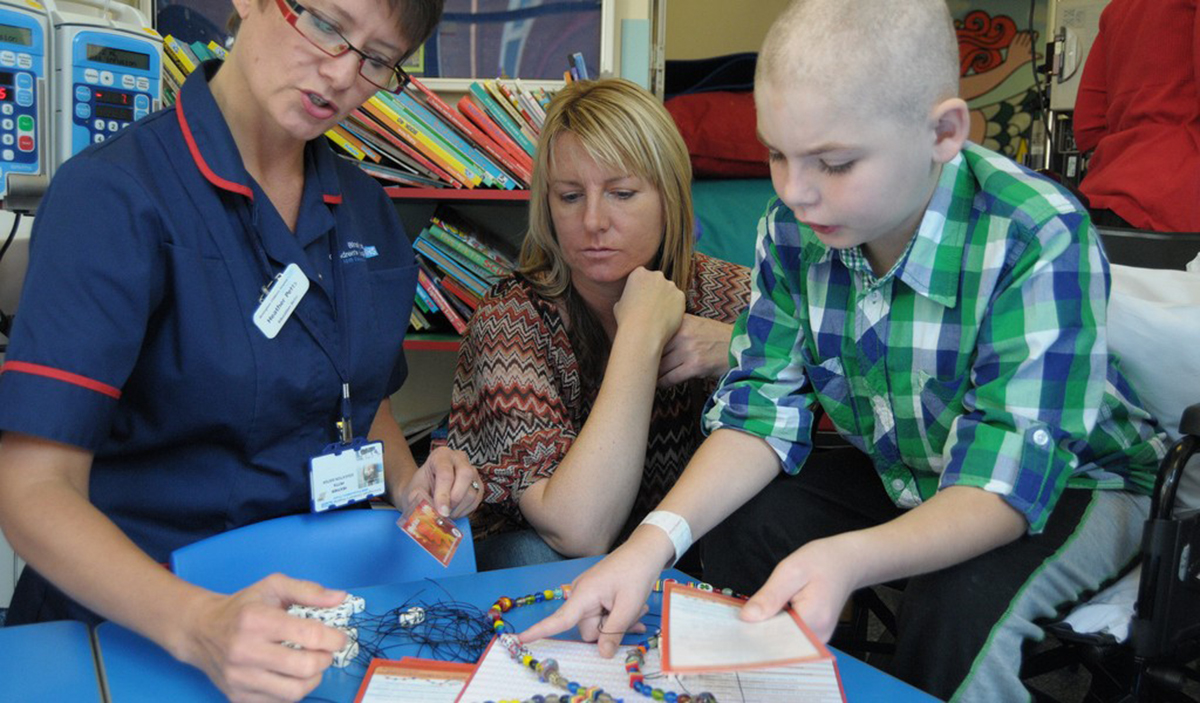For adults, the idea of death and dying is nothing less than thought provoking and scary. And if this is the case for older people who are thought to have had much more life experience and enjoyment for the years they have lived, just imagine what this would be for children who have just entered this world. In the setting of having a child with an advanced stage cancer, dealing with eminent loss is a very sensitive experience.

Most Common Cancers in Children
In order of prevalence, the most common cancers in children are cancers in children are leukemias. These are specific cancers that attack the white blood cells and the bone marrow from which they originate. Particularly aggressive, leukemias require an intensive course of chemotherapy once diagnosed, and unfortunately the risk of recurrence is considerable after initial treatment. They account for approximately 31% of all cases of children cancers, with Acute Lymphocytic Leukemia (arising from the lymphocytes directly) and Acute Myelogenous Leukemia (arising directly from the bone marrow) being the two most common types. Leukemias generally present with generalized bone pain, fatigue, lack of appetite, weight loss and sometimes, bleeding problems.
While adults tend to develop tumors in the upper parts of the brain, children tend to have lower brain tumors. Pediatric brain tumors and spinal cord cancers generally cause headaches, double vision, dizziness, unsteady gait, nausea and vomiting.
Neuroblastomas are the third most common types of cancers in children and are thought to arise from the developing neural crest cells of the embryo. It generally presents as a protrusion and swelling in the abdomen which is accompanied by fever and bone pain. However, it is rarely observed in children older than 10.
Next to neuroblastomas, you have Wilm’s Tumors which are tumors arising from the kidneys (generally 1, rarely both) and present as a swelling or protrusion in the lower abdominal region. Wilm’s tumor does not generally present in children older than 6 years of age.
See Also: Support for Family And Friends: Tips for Coping With Cancer in a Loved One
It is generally discovered incidentally by the parents, when they notice that their child’s eye looks unusual. When a light is shone in the affected eye, the pupil looks whitish or pinkish instead of reddish as it would in a normal eye (due to the presence of blood vessels). Parents could notice the white glare after taking a photograph with flash, for example.
Bone cancers are at the bottom of the list, but are also commonly encountered in children with cancer. The two most common types are osteosarcomas and Ewing sarcoma. Ewing sarcoma has a tendency to develop in the bones of the pelvis, the chest wall (ribs, sternum, etc.,) and in the long bones (legs and arms); whereas osteosarcomas develop in the long bones of the legs and arms, but mostly at their distal extremities.
Prevalence And Statistics Of Childhood Cancers
Although childhood cancers make only 1% of all the cancer cases in America, research has shown that the rates have been slightly rising over the past few decades, and today it is estimated that about 10 450 children in the United States under the age of 15, could be diagnosed with a form of cancer in 2014; and about 1350 of those affected could die of cancer.

However though, there is still some light at the end of those heartbreaking statistics because today, with the recent advances in cancer treatment, at least 80% of children affected with cancer have a 5-years survival rate, compared to 60% in the 70s.
Are Cancers in Adults the Same as Cancers in Children?
Undoubtedly, not. In fact, cancers in adults are mostly linked to lifestyle, diet and daily habits, whereas cancers in children are more often than not directly correlated with genetic problems or DNA repair errors during cell cycles and replication, which are changes that occur very early in life.
Because of the newness of children’s body and immune system, they tend to respond better to chemotherapy (cancer treatment) compared to adults. However, this is a sword with a double blade because this also implies that they are at higher risks of long term side effects which would require thorough follow-up in their years to come.
How do Children Understand Death?
Children’s understanding of death depends on their age and their development stage.
For instance, newborns and toddlers can sense and perceive anxiety, excitement and sadness, and can sense when someone is missing at home. This is because they can intake, absorb and emulate the emotions of the people around them. However, they are not able to understand the concept of death, which is a stage of no return. From three to six years, a child’s development is marked by a state of magical thinking (with the concept of having an imaginary friend). As a result, they tend to believe that death is reversible and temporary, and that the person who is dead is eventually coming back; just as going to work and coming back home. The period of six to nine years is actually a tricky part because some children understand the finality of death, and others do not. In their quest for answers and clarification, they tend to ask more concrete questions or even worry about apparently trivial things like how the deceased could eat, breathe or even bathe. Finally, they fear that death is contagious, and might come and catch or attack other loved ones too, which tends to make them more aggressive in times of mourning. At the ages of nine to thirteen, children and early teens are starting to understand and accept the finality of death. Because of that, they become more concerned about how death would affect the world around them, and thus express appropriate grief reactions.
See Also: Cancer Death Decreasing in US: What has Changed in New Millennium?
Defense mechanisms that they can use include denial or rationalization, and some of them, in an effort to cope with the anxiety that eminent death brings, might either romanticize it, or engage in risk taking behaviors to prove that they can defy their fate.
Whenever a child or an adolescent is diagnosed with cancer, the entire family is affected, just as his entire body is. Dealing with a child with cancer therefore requires a tactful, comprehensive and holistic approach.
- Photo courtesy of National Cancer Institute by Wikimedia Commons : commons.wikimedia.org/wiki/File:Pediatric_patients_receiving_chemotherapy.jpg
- Photo courtesy of Kathryn Cartwright by Flickr : www.flickr.com/photos/kathryninstereo/6192554624
- www.cancer.org/cancer/cancerinchildren/detailedguide/cancer-in-children-types-of-childhood-cancers
- www.cancer.org/cancer/cancerinchildren/detailedguide/cancer-in-children-key-statistics
- www.cancer.org/cancer/cancerinchildren/detailedguide/cancer-in-children-differences-adults-children
- www.curesearch.org/Types-of-Childrens-Cancer/
- www.hospicenet.org/html/understand.html


Your thoughts on this